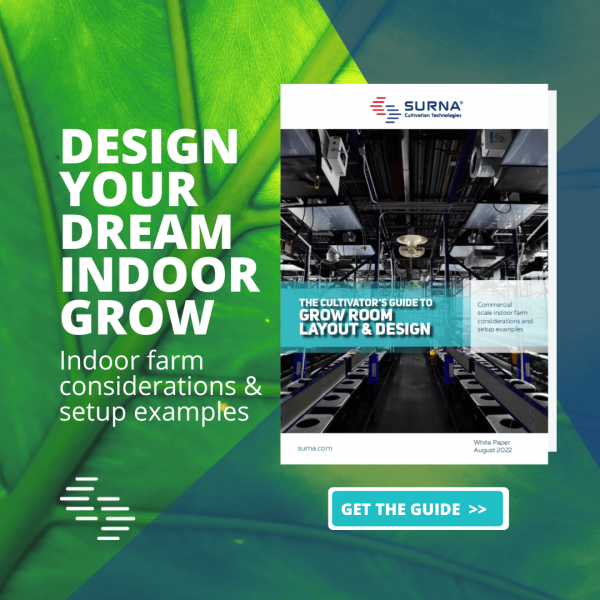As discussed previously, it is important to make sure the correct measurement is being considered when choosing a bulb or reflector. Lumens measure brightness as seen by humans, but PPFD measures light density as seen by plants.
However, not all PPFD is created equal. It is important to consider the evenness of PPFD coverage. Many reflectors have a high maximum PPFD, but it is only achieved on a small part of the plant canopy, and the rest of the plant canopy receives substantially lower PPFD. The areas of relatively high PPFD are called “hot spots” and should be avoided as much as possible.
Hot spots can be detrimental to plant growth because the section of plant below the hot spot receives substantially more light than the parts not under the plant canopy. This uneven light distribution can result in burned leaves under the hot spot and, in very rare cases, can even result in bleached buds. Hot spots also make the canopy difficult to manage as some branches will stretch much higher than others and will need to be trained away from the light by the gardener. This can get to be a lot of unnecessary work if there’s a hot spot under every reflector fixture.
Hot spots mean that certain sections of the plant will need more nutrients in order to keep up with the amount of light they are receiving. If not adjusted for, the portion of the plant under the hot spot can become yellow due to the lack of proper nutrition. This makes for a confusing feeding schedule and diminishes the usefulness of automated systems as plants will need more individualized attention.
In order to avoid hot spots, check the light pattern of any reflector you are considering purchasing for your garden. The best way to do this is to take PPFD measurements every six to twelve inches across the full target area. These readings will show where the bright spots are, how large they in canopy area coverage and how much they differ from other spots across the plant canopy.
If you do end up with a reflector with intense hot spots, consider placing the reflector further away from the plant canopy. This allows the light to be dispersed over a larger area and decreases the intensity of the light in a single location.
All in all, knowing how to test the evenness of light produced by a reflector will go a long way towards plant health and the creation of healthy buds. Along with a higher marketable-to-unmarketable flower ratio per square foot, a large amount of labor and material resources can be saved if the gardeners don’t have to deal with canopy height issues or complex nutrient delivery schedules. Creating a lighting plan for your canopy that avoids hot spots is a big first step in optimizing your grow facilities yield potential and yield consistency.

